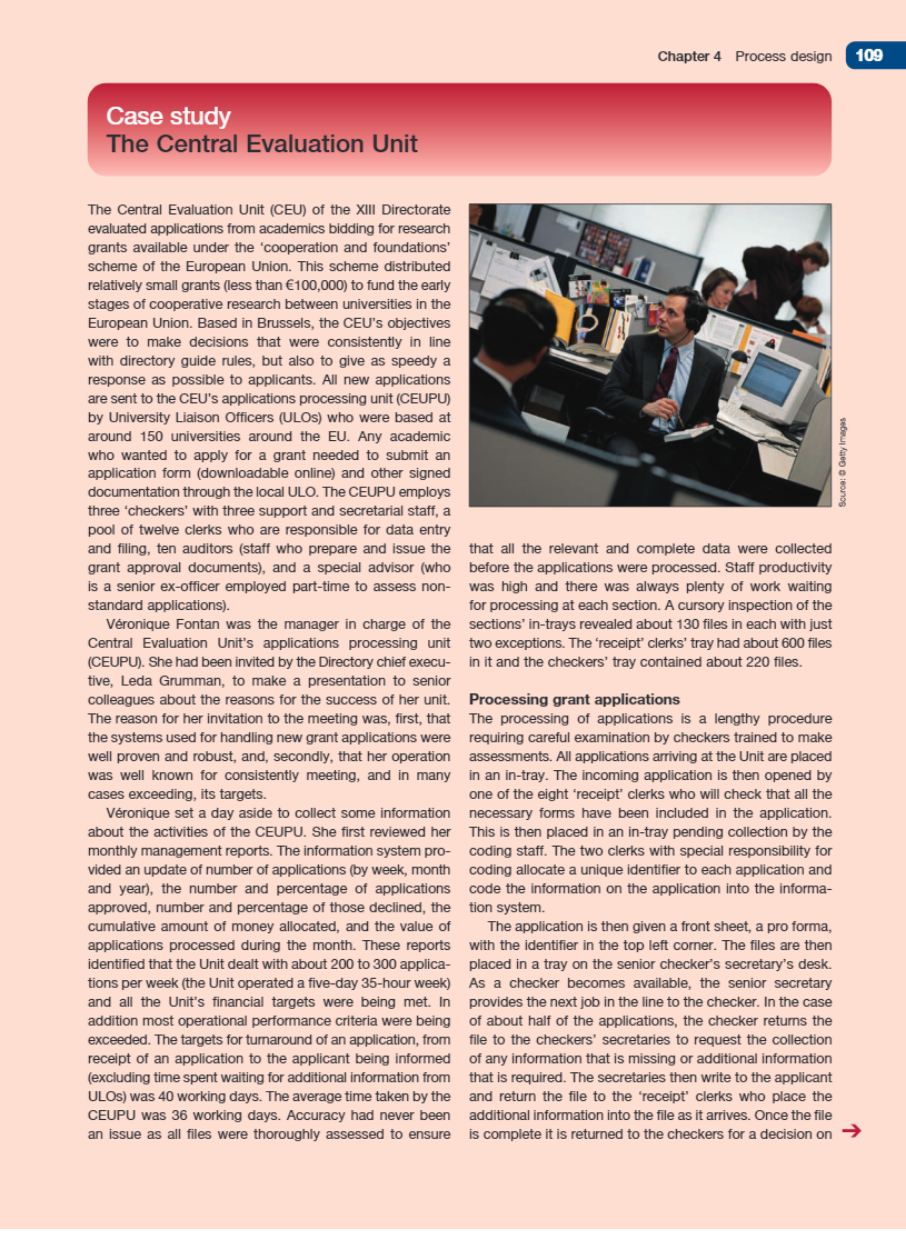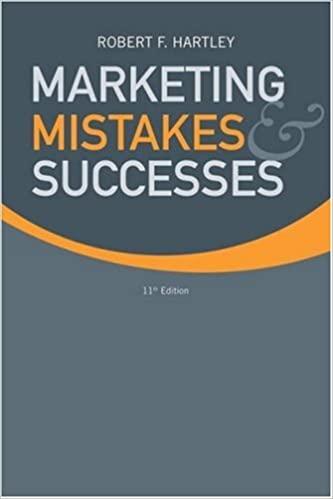Chapter 4 Process design 109 Case study The Central Evaluation Unit The Central Evaluation Unit (CEU) of the XIII Directorate evaluated applications from academics bidding for research grants available under the 'cooperation and foundations' scheme of the European Union. This scheme distributed relatively small grants (less than (100,000) to fund the early stages of cooperative research between universities in the European Union. Based in Brussels, the CEU's objectives were to make decisions that were consistently in line with directory guide rules, but also to give as speedy a response as possible to applicants. All new applications are sent to the CEU's applications processing unit (CEUPU) by University Liaison Officers (ULOs) who were based at around 150 universities around the EU. Any academic who wanted to apply for a grant needed to submit an Source: @ Getty Images application form (downloadable online) and other signed documentation through the local ULO. The CEUPU employs three 'checkers' with three support and secretarial staff, a pool of twelve clerks who are responsible for data entry and filing, ten auditors (staff who prepare and issue the that all the relevant and complete data were collected grant approval documents), and a special advisor (who before the applications were processed. Staff productivity is a senior ex-officer employed part-time to assess non- was high and there was always plenty of work waiting standard applications). for processing at each section. A cursory inspection of the Veronique Fontan was the manager in charge of the sections' in-trays revealed about 130 files in each with just Central Evaluation Unit's applications processing unit two exceptions. The 'receipt' clerks' tray had about 600 files (CEUPU). She had been invited by the Directory chief execu- in it and the checkers' tray contained about 220 files. tive, Leda Grumman, to make a presentation to senior colleagues about the reasons for the success of her unit. Processing grant applications The reason for her invitation to the meeting was, first, that The processing of applications is a lengthy procedure the systems used for handling new grant applications were requiring careful examination by checkers trained to make well proven and robust, and, secondly, that her operation assessments. All applications arriving at the Unit are placed was well known for consistently meeting, and in many in an in-tray. The incoming application is then opened by cases exceeding, its targets. one of the eight 'receipt' clerks who will check that all the Veronique set a day aside to collect some information necessary forms have been included in the application. about the activities of the CEUPU. She first reviewed her This is then placed in an in-tray pending collection by the monthly management reports. The information system pro- coding staff. The two clerks with special responsibility for vided an update of number of applications (by week, month coding allocate a unique identifier to each application and and year), the number and percentage of applications code the information on the application into the informa- approved, number and percentage of those declined, the tion system. cumulative amount of money allocated, and the value of The application is then given a front sheet, a pro forma, applications processed during the month. These reports with the identifier in the top left corner. The files are then identified that the Unit dealt with about 200 to 300 applica- placed in a tray on the senior checker's secretary's desk. tions per week (the Unit operated a five-day 35-hour week) As a checker becomes available, the senior secretary and all the Unit's financial targets were being met. In provides the next job in the line to the checker. In the case addition most operational performance criteria were being of about half of the applications, the checker returns the exceeded. The targets for turnaround of an application, from file to the checkers' secretaries to request the collection receipt of an application to the applicant being informed of any information that is missing or additional information (excluding time spent waiting for additional information from that is required. The secretaries then write to the applicant ULOs) was 40 working days. The average time taken by the and return the file to the 'receipt' clerks who place the CEUPU was 36 working days. Accuracy had never been additional information into the file as it arrives. Once the file an issue as all files were thoroughly assessed to ensure is complete it is returned to the checkers for a decision on110 Part Two Design the grant application. The file is then taken to auditors who number of applications made. Veronique then spent prepare the acceptance or rejection documents. about ten minutes with four of the clerks. They said their These documents are then sent, with the rest of the file, work was clear and routine, but their life was made difficult to the two 'dispatch' clerks who complete the documents by university liaison officers who rang in expecting them and mail them to the ULO for delivery to the academic to be able to tell them the status of an application they who made the application. Each section, clerical, coding, had submitted. It could take them hours, sometimes days, checkers, secretarial, auditing or issuing, have trays for to find any individual file. Indeed, two of the "receipt' incoming work. Files are taken from the bottom of the pile clerks now worked full-time on this activity. They also said when someone becomes free to ensure that all documents that university liaison officers frequently complained that are dealt with in strict order. decision-making seemed to be unusually slow, given the Veronique's confidence in her operation was some- relatively small amounts of money being applied for. what eroded when she asked for comments from some Veronique wondered whether, after all, she should agree university liaison officers and staff. One ULO told her of to make the presentation. frequent complaints about the delays over the process- ing of the applications and she felt there was a danger Questions of alienating some of the best potential applicants to the point where they "just would not bother applying'. A 1 Analyse and evaluate the processing of new applications at the CEUPU: second ULO complained that when he telephoned to ascertain the status of an application, the CEUPU staff - Create a process map for new applications - Calculate the time needed to process an individual did not seem to know where it was or how long it might be before a decision would be made. Furthermore he application cycle time for the process felt that this lack of information was eroding his rela- Calculate the number of people involved in the tionship with potential applicants, some of whom had processing of an application already decided to apply elsewhere for research funding. Explain why it is difficult to locate an individual file. Veronique reviewed the levels of applications over the 2 Summarize the problems of the CEUPU process. last few years which revealed a decline of five per cent 3 What suggestions would you make to Veronique to last year and two per cent the year before that on the improve her process








